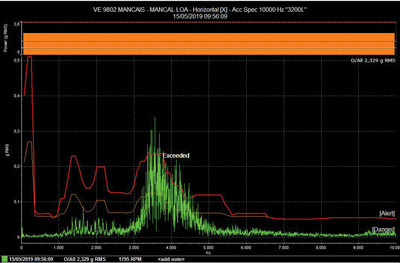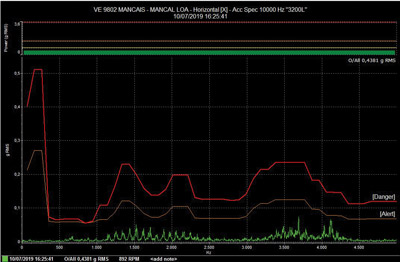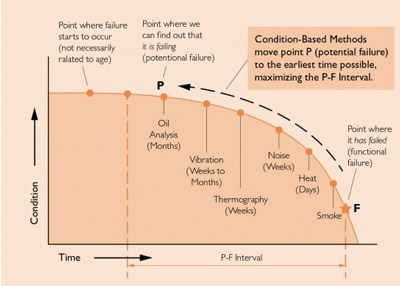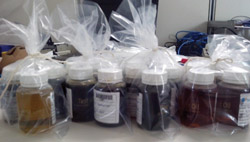Enhance your machinery's performance and reliability with our blog on Oil and Vibration Analysis. Discover how integrating vibration and oil analysis can optimize your maintenance strategy, ensuring the longevity and optimal performance of your industrial equipment.
In industrial maintenance and reliability, ensuring optimal performance and longevity of machinery is paramount. One crucial aspect of this maintenance is oil vibration analysis, a sophisticated technique used to assess the health of machinery by analyzing the vibrations transmitted through lubricating oil. This method not only aids in diagnosing potential issues but also plays a pivotal role in predictive maintenance strategies, thereby preventing costly breakdowns and downtime. Accroding to Machinery Lubrication, we will discover how vibration analysis and oil anaysis can optimize maintenance strategy and reliability.
Vibration and Oil Analysis are effective predictive maintenance methods that have been utilized for decades. Thermography and sensory inspection can be also applied to maintenance. However, each asset must be analyzed from numerous perspectives in order to establish the ideal method of maintenance.
Vibration Analysis
One well-known technique for identifying machine malfunction and confirming post-intervention machine acceptance is vibration analysis. It can be used with variety of rotating equipment such as compressors, turbines, power generators, fans pumps, reducers, and electric motors. It can detect problems like imbalance, misalignment, mechanical clearances, warped shafts, damaged bearings, gears, cavitation, and lubrication faults in belts. It is also capable of detecting resonance in static structures in more complex applications.
Vibration analysis has various advantages, having non-destructive or non-invasive procedures covering almost 80 percent of a plant's machinery. Maintenance teams can use the results to promote various changes. This includes enhanced alignment, better foundation conditions, higher-quality balancing, and the reduction or even elimination of persistent machine problems.
Machine fault modes can be observed using vibration analysis tools. These tools are kurtosis, rapid Fourier transform, envelope analysis, and spectrum analysis. These tools identify each failure modes such as unbalanced by one rotation (1x) and misalignment by one or two rotations (1x and 2x). These tools can be used to monitor the different fault modes.
A high-spectrum carpet value is frequently indicative of contamination, excess, or lack of lubrication. Integration of the vibration analysis and lubrication teams can lead to effective control of these cases.
At a frequency spectrum of 0.42 to 0.48 times the revolutions per minute (rpm), problems in sliding bearings with oil running under high pressure can be detected. Adjusting the oil speed can reduce or eliminate the wear caused by these faults, which force the shaft into the bearing and accelerate wear.

Figure 1: A bearing vibration spectrum before lubrication, Image Source: Machinery Lubrication

Figure 2: A bearing vibration spectrum after lubrication, Image Source: Machinery Lubrication
A high-spectrum carpet value is frequently a sign of lubricant failure. This is often due by contamination, excess, or lack of lubricant. When lubrication and vibration analysis team work together, these instances can be effectively controlled. When oil is running under high pressure in sliding bearings, it can cause wear faster than expected. The symptoms of oil vortex is also known as dry vortex. These are defined by frequency spectrum shifts of 0.42 to 0.48 times the revolutions per minute. This can be reduced or eliminated by changing the oil speed.
The critical machine speed and the oil whirl frequency coincide to produce oil instability, a severe situation that results in bearing play. This causes a more severe type of whirlwind known as oil whip, in which the crucial rotor speed is maintained even at greater speeds by the vortex speed, resulting in significant damage.

Figure 3. Oil instability frequency, Image Source: Machinery Lubrication
Improper lubrication can also result in rolling vibrations. The friction between the bearing and the shaft causes the carpet to rise, as can be seen clearly in the spectrum. Other machine frequencies can also be excited by this frictional force. The so-called carpet symptom is seen in Figures 1-2.
A scenario of mild oil instability that is still within allowable bounds is depicted in Figure 3. This frequency originates from a power generator's bearing. It can be used as a target for monitoring since it shows the machine's health.
Oil Analysis
Oil analysis is an essential method for determining the state of equipment and enhancing asset dependability. It is especially helpful for keeping an eye on hydraulic systems, pumps, transformers, compressors, turbines, and reducers. Particles produced by ongoing friction in machine parts, which are normally charged by the lubricant, can be identified with the aid of oil analysis. Having this knowledge is essential to preserving asset reliability.
Parameters for oil analysis are chosen based on machine characteristics and are an essential instrument for monitoring lubricant failures. Selecting the right tests and tailoring each one for a particular type of equipment is crucial for detecting anomalous oil wear particles. Techniques like particle counting and trend analysis are crucial for assessing the degree and condition of lubricants and determining whether to take action. Although the problem's severity is quantified by global values, the problem's frequency spectrum is also utilized to describe it. You can explore our previous article about “The Significance of Oil Analysis and Particle Counting”.
The shape of the particles must be observed during oil analysis in order to identify iron in oil samples. Changes in vibration analysis may be seen, and large particles signal the beginning of wear. Viscosity, particle count, water content, acid number, base number, and particle size are examples of common oil analysis categories. Equipment wear and tear is accelerated by water in oil and necessitates immediate attention. This pollutant is harsh to machine components and necessitates quick action because it causes oil oxidation and friction between metals.
A good lubrication plan should clearly outline the sampling process, including collecting, storing, and transporting oil samples. This is to guarantee the accuracy of the analysis result. These duties should be taught to lubrication technicians, and sample submission and identification need to be done with care.

Figure 4. Potential failure curve, Image Source: Machinery Lubrication
Figure 4 illustrates how, in low-speed gearbox scenarios when bearing failure is detected, oil analysis frequently appears before vibration analysis.

Figure 5. The quality of sample collection determines the quality of the analysis., Image Source: Machinery Lubrication
Oil analysis can be used to identify increasing metal particles and mineral impurities, which can be identified early on, in low-speed gearboxes. It can also be used to detect bearing failure before vibration analysis.
Vibration Analysis vs. Oil Analysis
Vibration and oil analysis are complementing methods for asset condition reliability and root cause analysis. Together, they are highly effective in detecting pinion tooth wear and bearing lubrication failure. Oil analysis is needed to identify water in oil, but vibration analysis is needed for imbalance and misalignment. Both methods are crucial for guaranteeing asset dependability and averting any problems, which makes them necessary in maintenance programs. To understand more about these two predictive maintenance methods, you can also check our previous blog “Oil Analysis vs. Vibration Analysis: When and Why to Choose Each Technique”.
Case Study: Low-Speed Gearbox Analysis
The primary factory of a South American manufacturer of vegetable proteins is exposed to outside contamination in the summer and winter when it rains a lot. These circumstances were identified by early oil analysis, which allowed the maintenance crew to add devices to block contamination and enhance the protective system, yielding measurable gains.
Oil analysis reports would show alerts that other predictive maintenance approaches did not pick up on. The facility quickly realized that oil analysis could identify problems before the other techniques could.
For instance, the chromium value went from 0.10 ppm to 0.83 ppm in the oil analysis results for a soybean elevator reducer, yet the iron content jumped from 65 to 527 parts per million (ppm). This was a clear sign of bearing wear.
In the same month, the gearbox's vibration analysis results were within normal limits. The increase in vibration readings that indicated an input shaft bearing failure didn't show up for over a month.
The workers at the company made the decision to repair the damaged oil and bearing in the machine after considering this information. The modified bearing's rolling components speak to the effectiveness of both strategies. Following the replacement of the oil and bearings, the vibration study revealed no flaws.
Combining vibration and oil analysis has produced positive outcomes for the facility. Productivity has increased and there have been fewer breakdowns. Reducing downtime is achieved by managing faults and coordinating interventions with production planning. To extend the life of machine parts, lubricating oil and components are only replaced as required. Balanced plant equipment uses less energy and vibrates less. Even more durable are parts like seals and bearings.
Conclusion
Vibration analysis and oil analysis have shown to be useful methods for keeping an eye on the condition of assets. Although numerous studies have demonstrated that oil analysis can offer an early warning system for possible problems, the best outcomes come from combining these two approaches, which makes them both essential components of modern maintenance programs.
Businesses can reduce expenses, minimize risks, and guarantee continuous production cycles by utilizing vibrational and oil analysis. For those looking to deepen their understanding and proficiency in vibration analysis, consider exploring comprehensive training programs offered by CRE Philippines. Our Vibration Analysis Training equips participants with the skills and knowledge necessary to implement effective predictive maintenance strategies, ensuring the continued reliability and performance of critical machinery.
We also offer Oil Analysis Certification Training Program that provides in-depth knowledge on oil analysis techniques and their applications.
If you're ready to enhance your maintenance skills and ensure the reliability of your machinery, contact us and join our comprehensive training programs. Our expert-led courses in vibration analysis and oil analysis certification provide the knowledge and tools you need to implement effective predictive maintenance strategies. Your path to superior machinery performance and reliability starts here!


